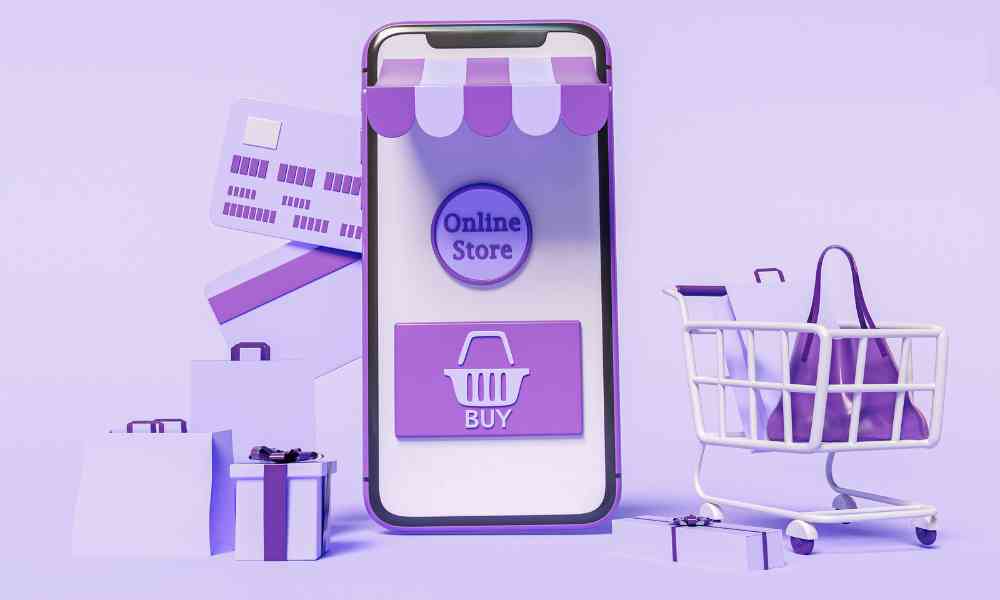Know About eCommerce, Types, Merits and Demerits

The world has changed drastically with the advent of e-commerce. In the past, shopping involved browsing physical stores, searching for products on shelves, and waiting in long lines to pay. But today, thanks to the power of ecommerce, you can explore a wide range of products and services from the comfort of your home.
The digital revolution of ecommerce has completely transformed the way we buy and sell, and its importance today is undeniable.
What is ecommerce?
E-commerce, also known as electronic commerce, is the magic of buying and selling over the Internet. It’s like having a global marketplace at your fingertips, where you can explore products and services without even leaving home.
The process is simple but incredibly effective. When browsing an online store, you can examine images, read detailed descriptions, and compare prices before making a decision.
For companies, ecommerce has been a revolution. They are no longer limited to a physical location but can reach a global audience. Small entrepreneurs have the opportunity to establish their own online stores and compete with industry giants. This has democratized trading, allowing anyone to get into the game.
Plus, ecommerce is all about personalization. The websites recommend products to you based on your preferences, and the promotions you receive are tailored to your interests. This tailored experience makes online shopping much more attractive and convenient.
Types of e-commerce
E-commerce is not just a single entity but a diverse universe encompassing various approaches and business models. Here, we’ll explore the different types of eCommerce, each with its own purpose and unique dynamics.
Business to Consumer (B2C)
The B2C model is probably the most familiar to all of us. Here, companies sell directly to consumers. Think about when you shop for clothes online, purchase electronics, or order food through apps. In this case, the company is the seller, and you, as a consumer, are the final buyer.
Business to Business (B2B)
B2B focuses on transactions between companies. In this type of e-commerce, companies sell products or services to other companies. This could involve selling supplies, industrial equipment, custom software, and more. It is an essential cog in the functioning of the economy, since many companies depend on others to maintain their operations.
Consumer to Business (C2B)
This model is often overlooked, but it is gaining ground. In C2B, consumers offer products or services to companies. For example, freelancer websites and crowdsourcing platforms fit this model. Consumers are the suppliers, and companies seek their skills or knowledge for specific projects.
Consumer to Consumer (C2C)
This type of e-commerce allows consumers to sell directly to other consumers. Internet auction platforms and second-hand markets are common examples of C2C. Here, people can sell used or unique items to other interested individuals.
Business to Government (B2G)
In B2G, companies sell products and services to the government. This can range from supply contracts to consulting services. E-commerce has simplified the way businesses interact with the government, streamlining processes and improving efficiency.
Difference between ecommerce and business
“Ecommerce” and “ebusiness” are two related but different concepts in the online world.
Ecommerce refers to the buying and selling of goods and services through Internet platforms. It is the process of carrying out financial transactions on the Internet, such as when you make purchases in online stores or make payments through secure platforms.
Ebusiness, on the other hand, encompasses more than just business transactions. It includes the entire spectrum of business operations that use digital technology. This ranges from internal company management to online customer interaction, digital marketing, online customer service and data analysis for business decision-making.
Advantages and disadvantages of ecommerce
E-commerce has transformed the way we buy and sell, but like any model, it has its pros and cons.
Advantages of ecommerce
Low costs: Online stores often require less investment compared to physical stores. There is no need to rent commercial space or hire additional staff to serve customers.
Flexibility: Online stores are open “24/7” (24 hours a day, 7 days a week). Customers can shop at any time, increasing convenience for them and sales opportunities for you.
Global reach: Through ecommerce, you can reach customers all over the world. You are not limited by geographic location, which expands your potential audience significantly.
Collect data: E-commerce allows you to track and analyze customer data, such as their purchasing preferences, browsing habits, and more. This helps you personalize offers and improve the customer experience.
Ease of expansion: Adding new products or categories to your ecommerce is much easier than in a physical store. This makes it easy to expand your catalog and adapt to changing trends.
Personalized online experience: Online stores can personalize the user experience. Product recommendations, special offers and promotions can be tailored to each customer’s interests.
Automation: Many processes on the Internet, such as payment processing and inventory management, can be automated. This saves time and reduces the possibility of human error.
Organic growth: Word of mouth and reviews from satisfied customers can increase your visibility. A happy customer can bring more customers to your store.
Disadvantages of ecommerce
The website is everything: The success of ecommerce depends largely on the functionality and appearance of your website. If the page is not intuitive or has technical problems, it can negatively affect the customer experience.
Not being able to try products: Compared to a physical store, online customers cannot touch or try products before purchasing, which can create some uncertainty.
Lots of competition: The barrier to entry in ecommerce is relatively low, which means there are a large number of competitors. Standing out and attracting customers can be a challenge.
Shipping Times: Although e-commerce offers convenience, shipping times can be longer compared to shopping in a physical store.
Security and privacy: The security of customer data is essential in ecommerce. Any security breach can have serious repercussions on customer trust.
Dependence on technology: Ecommerce is highly dependent on technology and Internet connectivity. Any technical issue can disrupt the customer experience.
Lack of human interaction: Although online stores offer convenience, they lack the human interaction found in physical stores.Returns and exchanges: Returning and exchanging products can be more complicated in e-commerce, which can cause inconvenience for customers.






